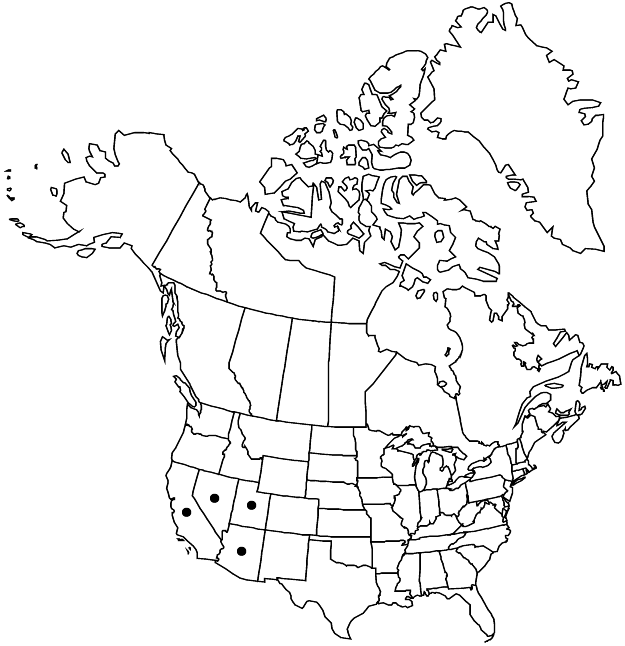Eriogonum davidsonii
Pittonia 2: 295. 1892.
Herbs, erect, 1–5 dm, glabrous, greenish to grayish. Stems: aerial flowering-stems erect, 0.5–1.5 (–2) dm, glabrous. Leaves basal; petiole 1–5 cm, floccose; blade round to reniform, (0.3–) 1–2 (–4) × (0.3–) 1–2 (–4) cm, densely white-tomentose abaxially, floccose to glabrate and mostly greenish adaxially. Inflorescences cymose, occasionally distally uniparous due to suppression of secondary branches, open, 5–40 × 5–35 cm; branches straight or nearly so, infrequently inwardly curved distally, glabrous; bracts 1–3 × 1–2 mm. Peduncles absent. Involucres appressed to branches, cylindric-turbinate, 3–4 × 2–2.5 mm, glabrous; teeth 5, erect, 0.2–0.3 mm. Flowers 1.5–2 mm; perianth white to pink or red, rarely yellow, glabrous; tepals monomorphic, oblong-obovate; stamens included, 1–1.5 mm; filaments pilose proximally. Achenes brown, 3-gonous, 2 mm. 2n = 40.
Phenology: Flowering May–Sep.
Habitat: Sandy to gravelly flats and slopes, mixed grassland, saltbush, chaparral, and sagebrush communities, oak and montane conifer woodlands
Elevation: (400-)900-2600 m
Distribution

Ariz., Calif., Nev., Utah, Mexico (Baja California)
Discussion
Eriogonum davidsonii is widespread and mostly common to occasionally abundant or weedy in Arizona, California, southern Nevada, and southern Utah. It is exceedingly variable. In the northern part of California, its range approaches that of E. luteolum var. luteolum, and the two can be difficult to differentiate. To the south, in Tulare County, the distinction between E. davidsonii and E. luteolum var. pedunculatum also is difficult. Specimens of Eriogonum davidsonii with curved inflorescence branches resemble E. cithariforme in the mountains of southern California, and care must be taken to separate E. davidsonii from its more robust relative, E. molestum in the San Jacinto Mountains of Riverside County. The disjunct populations in Utah and Arizona are somewhat different in appearance but presently do not seem worthy of taxonomic separation. The epithet juncinellum is available should recognition be desired.
Seeds of Davidson’s wild buckwheat were pounded into a meal and eaten dry by the Kawaiisu people of southern California (M. L. Zigmond 1981).
Selected References
None.
Lower Taxa
"narrowing" is not a number."dm" is not declared as a valid unit of measurement for this property."dm" is not declared as a valid unit of measurement for this property.